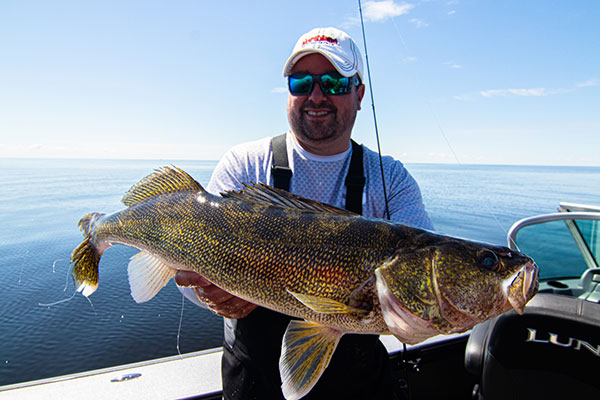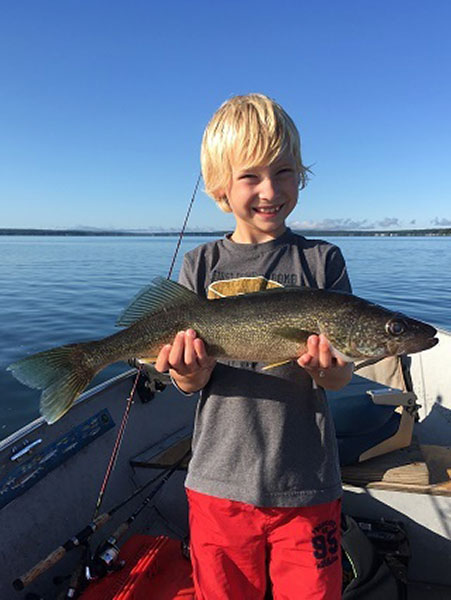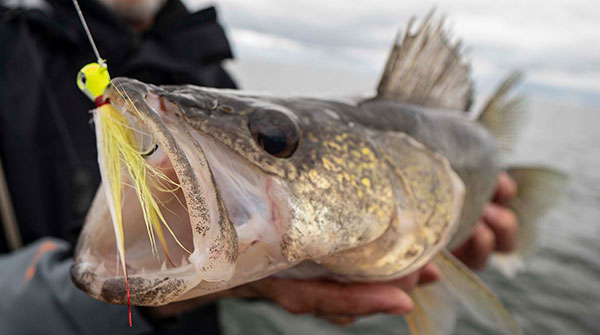- Details
By Josh Lantz, Traditions Media
 Early Fall Walleye
Early Fall Walleye
Walleyes are still largely following established summer patterns in most lakes and rivers come early September, which generally means deeper water. Anglers targeting ‘eyes should start their searches in all the likely areas, namely offshore humps, deep weed lines, mid-depth flats, and man-made cribs in lakes, and at the bottom of the deeper pools in rivers and streams. But they should also be prepared to search shallower whenever the conditions dictate.
- Details
MDNR Report
 Young angler with walleye
Young angler with walleye
A healthy, abundant walleye population is a big part of Michigan’s fisheries. These native fish provide exciting opportunities for world-class recreational fishing and play an important ecological role as a top predator.
Though several local, regional and Great Lakes-centric walleye plans exist, the Michigan Department of Natural Resources has drafted the first statewide walleye plan focused on inland waters – and is asking the public’s help in finalizing it.
The draft version of the “Management Plan for Walleye in Michigan’s Inland Waters” is available for review and written comment through April 1. All comments should be sent via email to DNR-Walleye@Michigan.gov.
- Details
By Louie Stout
 Sylvan, Winona Among Indiana’s Top Walleye Fisheries
Sylvan, Winona Among Indiana’s Top Walleye Fisheries
Sylvan and Winona lakes continue to reign as two of northern Indiana’s best walleye lakes while Dewart is showing promise as a lake to watch.
Indiana fisheries biologists spent some time last fall surveying walleye lakes that had been stocked to evaluate survival success of those young fish.
Here’s a snapshot at what they found:
Sylvan Lake (Noble County)
The 485-acre lake continues to produce good walleye fishing thanks to a consistent stocking program of 8.4 fish per acre.
- Details
By Louie Stout
 Indiana Walleye Stocking Program Continues to Grow
Indiana Walleye Stocking Program Continues to Grow
All of those walleye stockings that the Indiana DNR has done the last couple of years appear to be yielding fair to good results.
Biologists spent last fall revisiting stocked rivers and lakes to shock around the shorelines in search of yearling fish and to evaluate the fishery.
Here’s a look at what they found:
St. Joseph River
Biologist Matt Horsley spent two hours electro-shocking, beginning at Baugo Bay in Mishawaka and worked down to the Twin Branch Dam, alternating shorelines every 15 minutes. Those are areas where fish are stocked every other year.
“We saw a slight increase (compared to previous stockings) of one-year-olds, but that’s probably because we stocked more fish than normal in 2019,” he said. “Growth seems to be fairly average, with one year olds running about 11½ inches and two year olds about 13½ inches.”





